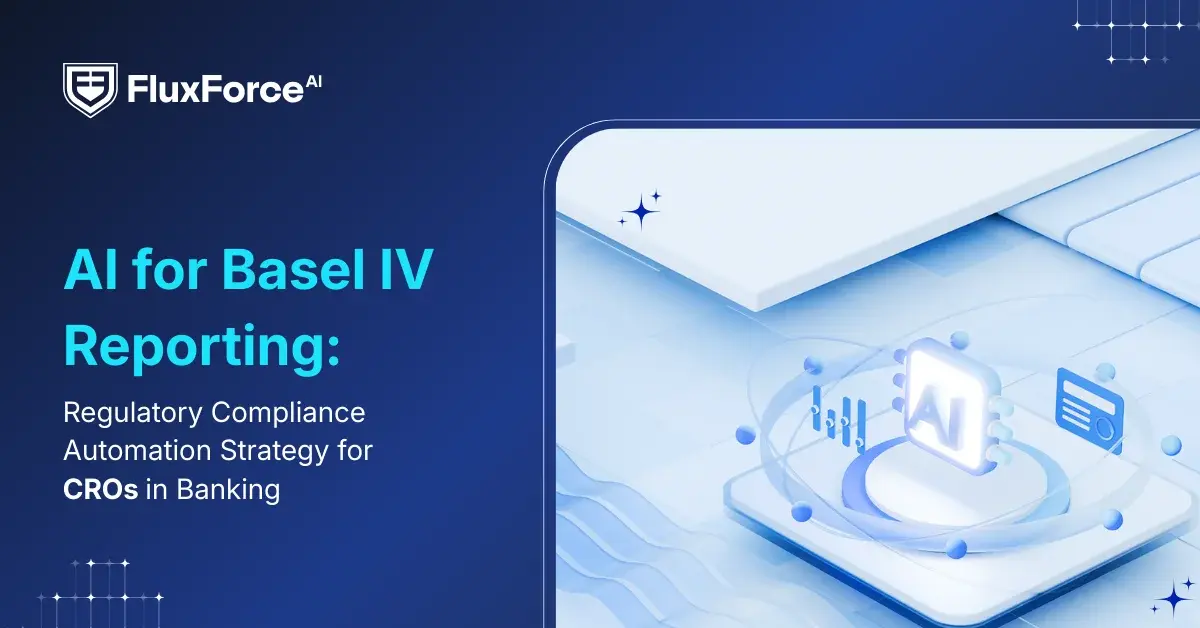Listen To Our Podcast🎧

Introduction

False positives remain a significant challenge in fraud prevention. Financial institutions spend millions each year investigating transactions that are incorrectly flagged as suspicious. Even with advanced systems, many alerts turn out to be legitimate, creating inefficiencies and slowing operations.
Agentic AI is changing this by allowing ai fraud agents to act autonomously. These systems learn from patterns, analyze transaction context, and make decisions without waiting for human review. Leading organizations using this approach have reported up to 80% false positives reduction.
Beyond operational benefits, this technology strengthens compliance with ai aml and aml anti money laundering requirements. Reducing false alerts lets teams concentrate on genuine threats and improves the overall efficiency of ai fraud detection workflows.
How False Positives Impact Financial Institutions

Operational Strain
False positives in ai fraud detection create a constant operational burden for financial institutions. Each incorrectly flagged transaction demands manual review, consuming analyst time and delaying focus on genuine high-risk activity. Reports from the Association of Certified Fraud Examiners indicate that detection delays can reach 18 months in some cases, significantly increasing financial exposure and operational inefficiency.
Regulatory and Compliance Pressure
Excess alerts affect regulatory compliance for teams using compliance monitoring systems and managing ai aml compliance. High volumes of false positives make it harder to identify genuine fraud patterns, complicating adherence to aml anti money laundering standards and producing gaps in audit trails that can attract regulatory scrutiny.
Risk to Relationships and Reputation
False positives interfere with critical payment workflows. Vendor invoices may be delayed, client transactions blocked, and treasury operations disrupted. These inefficiencies can damage trust and confidence among partners and customers. For institutions operating in high-volume environments, maintaining accuracy while controlling risk is crucial to sustaining operational performance and stakeholder confidence.
Onboard Customers in Seconds

Why Agentic AI Fraud Agents Outperform Traditional Systems
The Limitations of Rules-Based Detection
Conventional fraud detection relies on static rules and thresholds. If a transaction exceeds a set limit or shows a predefined anomaly, it is flagged. This rigid process cannot adapt to new fraud tactics, which leads to a high volume of false positives. Fraud teams then spend more time clearing legitimate activity instead of investigating real risks.
The Agentic AI Advantage
Agentic AI fraud agents work differently. They do not stop at surface-level checks. Instead, they analyze transactions in context, pulling data from vendors, payment histories, and communication patterns. Their agentic behavior means they can take action on their own, such as pausing a suspicious payment or blocking an unverified vendor, without waiting for manual review.
Another defining feature is self-learning. Each decision made by the system improves its future accuracy. Over time, false alerts drop, and detection of real fraud signals increases. This makes ai fraud detection more precise and less disruptive for financial institutions.
For industries where transaction volume is high, such as fraud detection in banking or enterprise accounts payable, this approach provides measurable results. Instead of being overwhelmed by unnecessary alerts, teams can focus their resources on high-value investigations, keeping compliance intact and operations efficient.
How Agentic AI Reduces False Positives by 80%

Financial institutions adopting agentic AI fraud detection systems report up to 80 percent fewer false positives. This improvement comes from a combination of context-driven analysis, self-learning models, and autonomous decision-making. Instead of flagging every outlier, the system evaluates risk with a more precise lens.
Key factors behind the 80 percent reduction include:
1. Contextual Risk Scoring
Transactions are assessed against historical patterns, vendor behavior, and known fraud markers. This reduces alerts that lack meaningful risk indicators.
2. Adaptive Learning
Each confirmed fraud or cleared alert is fed back into the model. Over time, the system refines its accuracy and avoids repeating the same false triggers.
3. Autonomous Transaction Review
AI fraud agents act immediately when they detect suspicious activity. They can block payments, hold invoices, or escalate with a full risk report. This reduces unnecessary manual investigations.
4. Cross-Source Validation
By validating vendors against registries, sanction lists, and internal records, agentic AI prevents duplication or manipulation. This prevents routine payments from being flagged incorrectly.
These mechanisms create a direct business advantage. Compliance teams spend less time chasing low-risk alerts, treasury operations move faster, and fraud prevention becomes both proactive and reliable.
Industry Applications and ROI Impact of Agentic AI Fraud Agents
Financial institutions and fintech platforms operate under extreme regulatory pressure where even a slight deviation in fraud monitoring can mean millions lost in fines, penalties, or customer attrition. By cutting false positives by 80%, agentic AI fraud agents deliver measurable results that directly impact operational efficiency, customer trust, and compliance outcomes.
Banking and Credit Card Fraud Monitoring
Traditional fraud detection flags a large portion of legitimate card transactions as suspicious. This frustrates customers and clogs fraud investigation teams. With agentic AI, decisioning is based on transaction context, behavioral data, and adaptive learning. Global banks deploying this model have reported a 40% reduction in manual case reviews and a 20% uplift in approval rates for legitimate high-value transactions.
Fintech and Payment Gateways
Payment gateways process billions of micro-transactions daily, where latency and accuracy directly influence revenue. By applying agentic AI fraud agents, fintechs can analyze transaction intent in milliseconds, reducing unnecessary payment holds and improving merchant satisfaction. According to a report from Aite-Novarica, digital payment providers integrating adaptive AI-driven fraud detection observed $8M in annual savings per billion transactions processed.
Insurance Claims and Policy Fraud
False positives in insurance often delay claims for genuine customers, damaging brand credibility. Agentic AI models validate policyholder identity, claim intent, and historical behavior in real time, leading to faster payouts for legitimate claims while sharply reducing fraud-related write-offs. Insurers applying this approach have shortened claims verification cycles by up to 35%, significantly improving customer retention.
The business ROI from agentic AI fraud agents is not limited to fraud prevention. Lower investigation costs, reduced compliance exposure, and improved transaction approval rates contribute to top-line growth and bottom-line efficiency simultaneously. As McKinsey noted, AI-driven fraud prevention is one of the few compliance investments that pays for itself within 12–18 months.

Shaping the Future of AI in Finance
Fluxforce research uncovers how banks and enterprises are adapting to fraud, compliance, and data challenges in 2025.
Conclusion
Cutting false positives by 80% with agentic AI fraud agents is a direct business advantage that reduces investigation costs, protects compliance outcomes, and strengthens customer confidence. Every accurate decision made by these intelligent systems means faster approvals, fewer manual reviews, and a measurable impact on revenue protection.
The organizations moving early on agentic AI are already setting higher standards for fraud prevention in banking, fintech, and insurance. They are proving that precision in fraud detection is not just about security but about enabling smoother customer journeys and protecting long-term growth.
Fraud prevention will always be an arms race, but businesses that adopt agentic AI are no longer fighting with outdated tools. They are building systems that adapt in real time, deliver tangible ROI, and safeguard every transaction with speed and accuracy. That combination is what will define the next generation of compliance and fraud risk management.


.webp)



Share this article